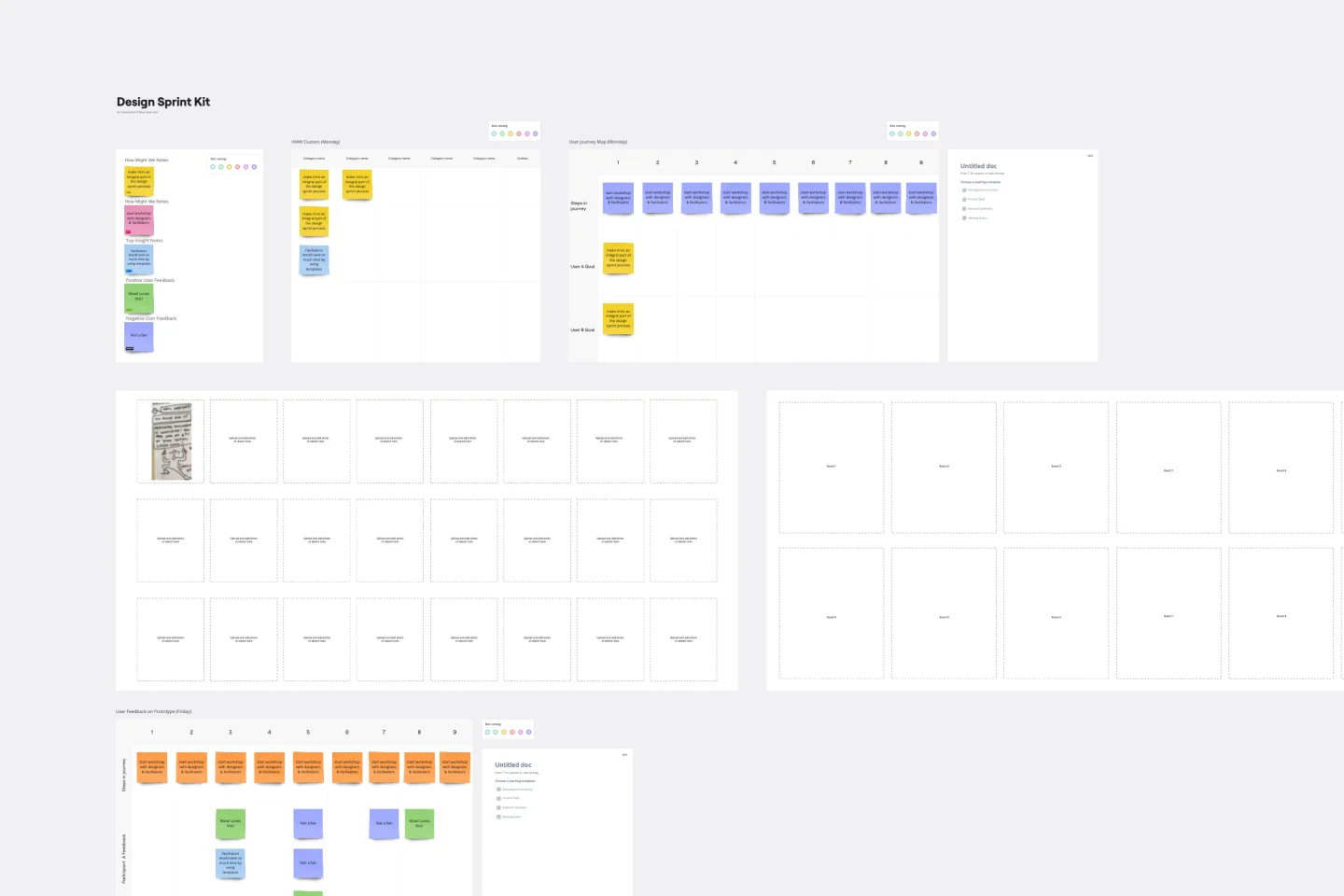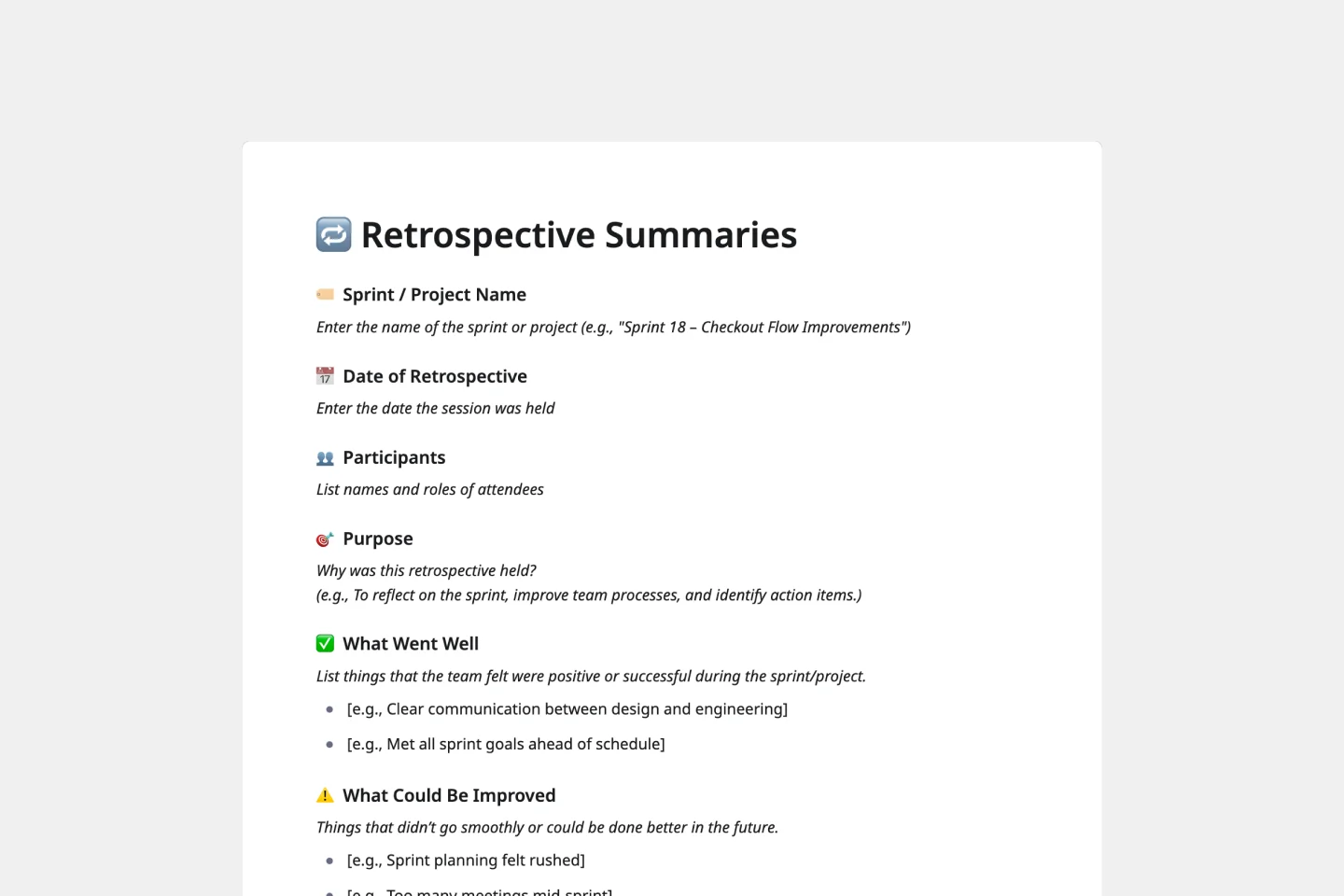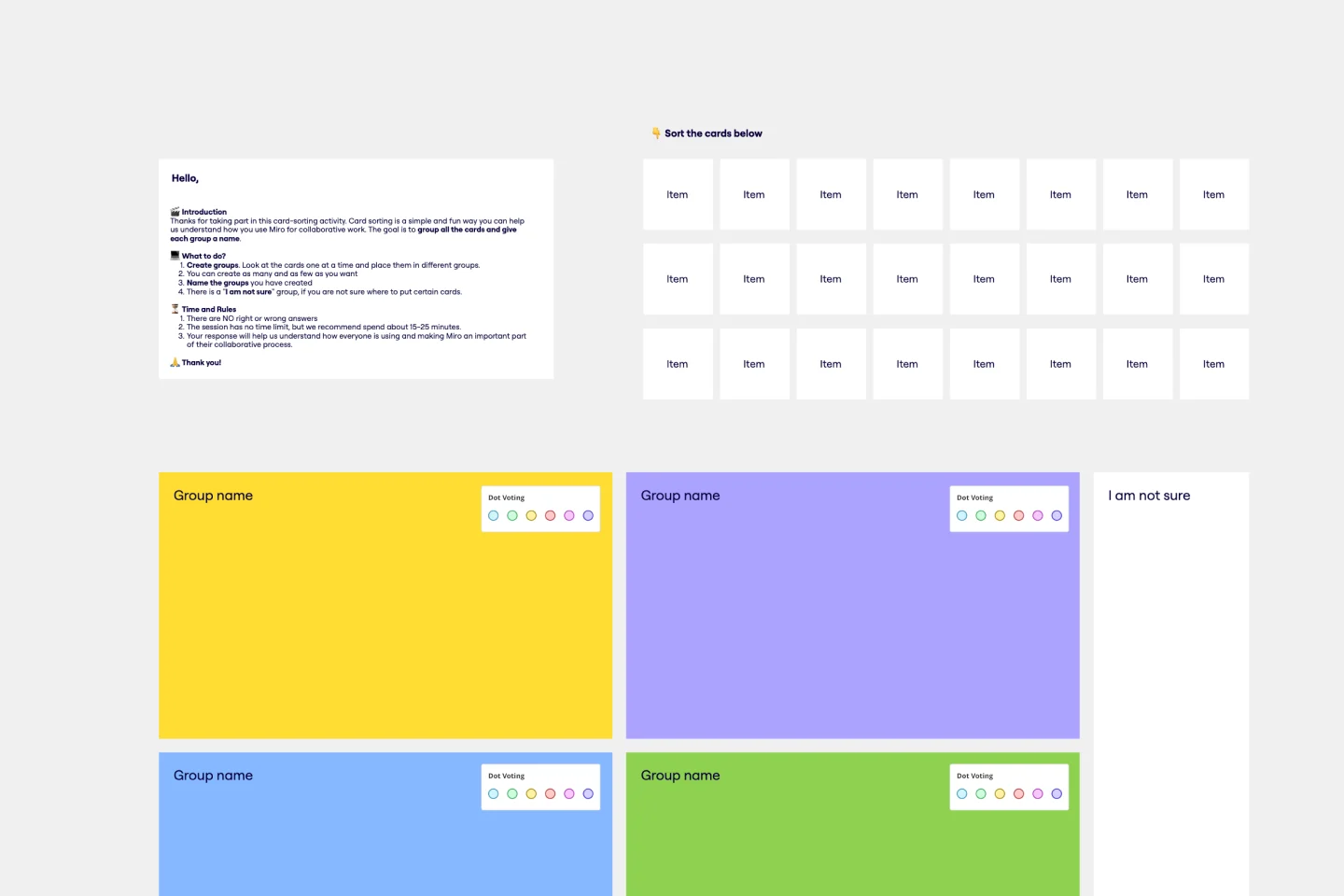Org Chart
382 templates
Design Sprint Kit Template
0 likes
8 uses

Design Sprint Kit Template
With the right focused and strategic approach, five days is all it takes to address your biggest product challenges. That’s the thinking behind Design Sprint methodology. Created by Tanya Junell of Blue Label Labs, this Design Sprint Kit provides a set of lightweight templates that support the Design Sprint’s collaborative activities and voting—and maintains the energy, team spirit, and momentum that was sparked in the session. Virtual sprint supplies and prepared whiteboards make this kit especially useful for remote Design Sprint Facilitators.
Porter's Five Forces Template
1 likes
160 uses

Porter's Five Forces Template
Developed by Harvard Business School professor Michael Porter, Porter’s Five Forces has become one of the most popular and highly regarded business strategy tools available for teams. Use Porter’s Five Forces to measure the strength of your current competition and decide which markets you might be able to move into. Porter’s Five Forces include: supplier power, buyer power, rivalry among existing competitors, the threat of substitute products or services, the threat of substitute products and services, and the threat of new entrants.
Swimlane Flowchart Template
2 likes
60 uses

Swimlane Flowchart Template
Ever watched a project stall because nobody knew whose turn it was to act? A swimlane flowchart eliminates the guesswork by visually organizing processes across departments, roles, or systems. Each "lane" represents a different actor, making it instantly clear who owns each step in your workflow. Use this template to bring transparency to complex multi-department processes, streamline handoffs, and keep everyone aligned on their responsibilities.
Retrospective Summaries Template
0 likes
5 uses

Retrospective Summaries Template
Ever walked out of a retrospective feeling energized about the team's insights, only to realize weeks later that nothing actually changed? You're not alone. Most retrospective conversations disappear into the void, leaving teams to repeat the same mistakes sprint after sprint. This retrospective summaries template captures your team's valuable insights in a structured format that ensures action items get tracked, wins get celebrated, and improvements actually happen. Created with Miro Docs, it seamlessly integrates with your existing boards and workflows.
Customer Journey Map
263 likes
1.8K uses

Customer Journey Map
Customer journey mapping is a method that visualizes and narrates how users navigate a site or app to achieve their objectives.
PRD Template
0 likes
23 uses

PRD Template
The PRD Template by Miro is a blueprint designed to streamline the product development process. Acting as a central hub for all essential details, this template ensures team alignment by laying out clear project objectives, use cases, and design specifics. The primary benefit? Seamless communication and clarity, reducing the likelihood of missteps and fostering a smooth transition from idea conception to product launch.
Personal Work Charter
116 likes
209 uses
Low-fidelity Wireframes Template
5 likes
504 uses

Low-fidelity Wireframes Template
When you’re designing a site or building an app, the early stages should be BIG — seeing the big picture and communicating the big idea. Low fidelity wireframes empower you to see it and do it. These rough layouts (think of them as the digital version of a sketch on a napkin) help your teams and project stakeholders quickly determine if a design meeting meets your users’ needs. Our template lets you easily use wireframes during meetings or workshops, presentations, and critique sessions.
Card Sorting Template
1 likes
166 uses

Card Sorting Template
Card sorting is a brainstorming technique typically used by design teams but applicable to any brainstorm or team. The method is designed to facilitate more efficient and creative brainstorms. In a card sorting exercise, you and your team create groups out of content, objects, or ideas. You begin by labeling a deck of cards with information related to the topic of the brainstorm. Working as a group or individuals, you then sort the cards in a way that makes sense to you, then label each group with a short description. Card sorting allows you to form unexpected but meaningful connections between ideas.


